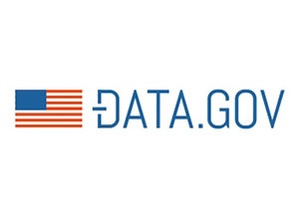Hyperlinks and hope: Data.gov five years out

In the five years since Data.gov’s public launch, the government-wide data portal has expanded dramatically, been the subject of a legislative fight, the focus of an international open source collaboration as well as numerous contests and dialogues.
Five years into the Obama administration’s experiment with Data.gov marks a good time to ask — is the experiment a success?
That has always been a difficult issue to address. To ask whether or not Data.gov is a success is to ask a series of related questions. Are people actually using the data, and would they have found it if the site didn’t exist? Is this new data, or just a branding exercise? Whose needs can this serve, and whose needs is it serving?
These are tough questions to ask of Data.gov because we don’t usually project values and expectations onto websites. A combination of hype, real potential and confusion about open data have elevated government data portals to an odd position in the civic sphere, to a symbol of openness and technological transformation made of hyperlinks and hope.
When compared with all the materials necessary for openness, aggregating links is a relatively minor first step towards openness. As we’ve described before:
Unfortunately, this is not the anatomy of an open government. Instead, this is the anatomy of the popular open government data initiatives that are currently in favor. Governments have learned to say that data will be open, provide a place to find it, release some selected datasets, and point to its reuse.
Despite this, data portals are often announced with expansive rhetoric about transformation; here’s Vivek Kundra in 2009:
The Obama administration has dramatically changed the way they talk about transparency, moving the goalposts for initiatives like Data.gov. Early speeches were about democracy and accountability, reflecting Obama’s campaign rhetoric about moving beyond President Bush’s secrecy, and about harnessing technology to build a more representative government. Kundra’s Data.gov was viewed as a tool that would (paraphrasing from the video) help hold public officials accountable, lower the costs of government operations and drive better policies across the government. While there’s an argument to be made that data that is available on Data.gov does contribute to those goals, no senior Obama officials are making claims about “lifting the veil” anymore.
Administration data transparency efforts have so lost their ambition that a new Data.gov “Impact” section was recently announced, and featured only commercial reuse of government data, alongside financial valuation statistics for so-called open data companies.
I don’t know of a better example of the decay of the administration’s transparency ambitions — once aimed at strengthening democracy, and now attempting to legitimize itself through proximity to private profit. (Though there’s a strong competitor in Obama’s campaign finance evolution, where the campaign finance reformer has been completely subsumed by the dark money innovator.)
The Obama vision of using technology to democratize power has decayed into economic boosterism, finding validation primarily through the activity of private industry.
This doesn’t render Data.gov useless, of course. If we judged all administration projects solely on their rhetorical veneer, we’d be in a terrible situation. That’s why we fought vehemently to defend the site and related initiatives, despite these frustrations. While administration rhetoric relies on a sanitized transparency that is agnostic to power, civil servants are still using Data.gov and related initiatives for all the reform mileage it has.
In many ways, Data.gov’s greatest value is probably as an organizing instrument — centering our attention on the value of open government data. (Much like the international Open Government Partnership, whose primary value lies in empowering voluntary reforms by nurturing enthusiasm from like-minded civil servants.)
Discussions of data quality and information policy spurred by having to judge Data.gov (“How many datasets is a lot?”) have fed the administration’s iterative approach to open data policymaking, and give us a chance at having comprehensive listings of agency data holdings — for the first time. While a law may ultimately be necessary to compel agencies to disclose their data holdings, some administration officials’ work on this issue is enormously valuable.
Reform processes around Data.gov have been similarly encouraging, as those involved have led public redesign dialogues, developed their work in public and embraced criticism.
Even if Data.gov can’t live up to its initial billing, its greatest benefits may lie in the space it creates for developers, civil servants and policymakers for incremental reform, investigation and dialogue. While there’s value in slight improvements in finding data online through a huge aggregation service, Data.gov seems most effective at changing how we view and approach administration information policy as a whole. And when Congress starts paying more attention to open data initiatives, we’ll be better off for the head start pioneered by civil servants working on the Data.gov initiative.

